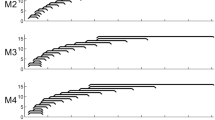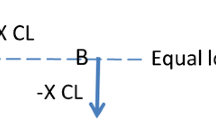Abstract
Poor spectral resolution contributes to the difficulties experienced by cochlear implant (CI) users when listening to speech in noise. However, correlations between measures of spectral resolution and speech perception in noise have not always been found to be robust. It may be that the relationship between spectral resolution and speech perception in noise becomes clearer in conditions where the speech and noise are not spectrally matched, so that improved spectral resolution can assist in separating the speech from the masker. To test this prediction, speech intelligibility was measured with noise or tone maskers that were presented either in the same spectral channels as the speech or in interleaved spectral channels. Spectral resolution was estimated via a spectral ripple discrimination task. Results from vocoder simulations in normal-hearing listeners showed increasing differences in speech intelligibility between spectrally overlapped and interleaved maskers as well as improved spectral ripple discrimination with increasing spectral resolution. However, no clear differences were observed in CI users between performance with spectrally interleaved and overlapped maskers, or between tone and noise maskers. The results suggest that spectral resolution in current CIs is too poor to take advantage of the spectral separation produced by spectrally interleaved speech and maskers. Overall, the spectrally interleaved and tonal maskers produce a much larger difference in performance between normal-hearing listeners and CI users than do traditional speech-in-noise measures, and thus provide a more sensitive test of speech perception abilities for current and future implantable devices.








Similar content being viewed by others
Change history
20 July 2020
An error in interpreting the statistical analysis output led to reporting errors in some of the effect sizes for the three-way repeated-measures ANOVAs in Experiment 1.
References
Allen EJ, Oxenham AJ (2014) Symmetric interactions and interference between pitch and timbre. J Acoust Soc Am 135:1371–1379
Anderson ES, Nelson DA, Kreft H, Nelson PB, Oxenham AJ (2011) Comparing spatial tuning curves, spectral ripple resolution, and speech perception in cochlear implant users. J Acoust Soc Am 130:364–375
Anderson ES, Oxenham AJ, Nelson PB, Nelson DA (2012) Assessing the role of spectral and intensity cues in spectral ripple detection and discrimination in cochlear-implant users. J Acoust Soc Am 132:3925–3934
Apoux F, Healy EW (2010) Relative contribution of off- and on-frequency spectral components of background noise to the masking of unprocessed and vocoded speech. J Acoust Soc Am 128:2075–2084
Aronoff JM, Landsberger DM (2013) The development of a modified spectral ripple test. J Acoust Soc Am 134:EL217–EL222
Azadpour M, Mckay CM (2012) A psychophysical method for measuring spatial resolution in Cochlear implants. J Assoc Res Otolaryngol 13:14–157
Bernstein JGW, Mehraei G, Shamma S, Gallun FJ, Theodoroff SM, Leek MR (2013) Spectrotemporal modulation sensitivity as a predictor of speech intelligibility for hearing-impaired listeners. J Am Acad Audiol 24:293–306
Bingabr M, Espinoza-Varas B, Loizou PC (2008) Simulating the effect of spread of excitation in cochlear implants. Hear Res 241:73–79
Crew JD, Galvin JJ, Fu QJ (2012) Channel interaction limits melodic pitch perception in simulated cochlear implants. J Acoust Soc Am 132:EL429–EL435
Dorman MF, Loizou PC, Fitzke J, Tu Z (1998) The recognition of sentences in noise by normal-hearing listeners using simulations of cochlear-implant signal processors with 6-20 channels. J Acoust Soc Am 104:3583–3585
Drennan WR, Anderson ES, Won JH, Rubinstein JT (2014) Validation of a clinical assessment of spectral-ripple resolution for cochlear implant users. Ear Hear 35:e92–e98
Eddins DA, Bero EM (2007) Spectral modulation detection as a function of modulation frequency, carrier bandwidth, and carrier frequency region. J Acoust Soc Am 121:363–372
Friesen LM, Shannon RV, Baskent D, Wang X (2001) Speech recognition in noise as a function of the number of spectral channels: comparison of acoustic hearing and cochlear implants. J Acoust Soc Am 110:1150–1163
Fu QJ, Nogaki G (2005) Noise susceptibility of cochlear implant users: the role of spectral resolution and smearing. J Assoc Res Otolaryngol 6:19–27
Fu QJ, Shannon RV, Wang X (2013) Effects of noise and spectral resolution on vowel and consonant recognition: acoustic and electric hearing. J Acoust Soc Am 104:3586–3596
Gifford RH, Noble JH, Camarata SM et al (2018) The relationship between spectral modulation detection and speech recognition: adult versus pediatric cochlear implant recipients. Trends Hear 22:1–14
Glasberg BR, Moore BCJ (1990) Derivation of auditory filter shapes from notched-noise data. Hear Res 47:103–138
Grange JA, Culling JF, Harris NSL, Bergfeld S (2017) Cochlear implant simulator with independent representation of the full spiral ganglion. J Acoust Soc Am 142:484–489
Henry BA, Turner CW (2003) The resolution of complex spectral patterns by cochlear implant and normal-hearing listeners. J Acoust Soc Am 113:2861–2873
Henry BA, Turner CW, Behrens A (2005) Spectral peak resolution and speech recognition in quiet: normal hearing, hearing impaired, and cochlear implant listeners. J Acoust Soc Am 118:1111–1121
Holden LK, Firszt JB, Reeder RM, Uchanski RM, Dwyer NY, Holden TA (2016) Factors affecting outcomes in cochlear implant recipients implanted with a perimodiolar electrode array located in scala tympani. Otol Neurotol 37:1662–1668
Houtgast T (1977) Auditory-filter characteristics derived from direct-masking data and pulsation-threshold data with a rippled-noise masker. J Acoust Soc Am 62:409–415
IEEE (1969) IEEE recommended practices for speech quality measurements. IEEE Trans Audio Electroacoust 17:227–246
Jeon EK, Turner CW, Karsten SA, Henry BA, Gantz BJ (2015) Cochlear implant users’ spectral ripple resolution. J Acoust Soc Am 138:2350–2358
Kidd G Jr, Mason CR, Gallun FJ (2005) Combining energetic and informational masking for speech identification. J Acoust Soc Am 118:982–992
Landsberger DM, Padilla M, Martinez AS, Eisenberg LS (2017) Spectral-temporal modulated ripple discrimination by children with Cochlear implants. Ear Hear 39:60–68
Litvak LM, Spahr AJ, Saoji AA, Fridman GY (2007) Relationship between perception of spectral ripple and speech recognition in cochlear implant and vocoder listeners. J Acoust Soc Am 122:982–991
Mesnildrey Q, Macherey O (2015) Simulating the dual-peak excitation pattern produced by bipolar stimulation of a cochlear implant: effects on speech intelligibility. Hear Res 319:32–47
Nilsson M, Soli SD, Sullivan JA (1994) Development of the hearing in noise test for the measurement of speech reception thresholds in quiet and in noise. J Acoust Soc Am 95:1085–1099
Oxenham AJ, Kreft HA (2014) Speech perception in tones and noise via cochlear implants reveals influence of spectral resolution on temporal processing. Trends Hear 18:1–14
Patterson RD (1976) Auditory filter shapes derived with noise stimuli. J Acoust Soc Am 59:640–654
Patterson RD, Nimmo-Smith I, Weber DL, Milroy R (1982) The deterioration of hearing with age: frequency selectivity, the critical ratio, the audiogram, and speech threshold. J Acoust Soc Am 72:1788–1803
Saoji AA, Eddins DA (2007) Spectral modulation masking patterns reveal tuning to spectral envelope frequency. J Acoust Soc Am 122:1004–1013
Saoji AA, Litvak L, Spahr AJ, Eddins DA (2009) Spectral modulation detection and vowel and consonant identifications in cochlear implant listeners. J Acoust Soc Am 126:955–958
Shannon RV, Zeng FG, Kamath V, Wygonski J, Ekelid M (1995) Speech recognition with primarily temporal cues. Science 270:303–304
Stone MA, Moore BCJ (2014) On the near non-existence of “pure” energetic masking release for speech. J Acoust Soc Am 135:1967–1977
Stone MA, Füllgrabe C, Mackinnon RC, Moore BCJ (2011) The importance for speech intelligibility of random fluctuations in “steady” background noise. J Acoust Soc Am 130:2874–2881
Stone MA, Füllgrabe C, Moore BCJ (2012) Notionally steady background noise acts primarily as a modulation masker of speech. J Acoust Soc Am 132:317–326
Studebaker GA (1985) A “rationalized” arcsine transform. J Speech Hear Res 28:455–462
Supin AY, Popov VV, Milekhina ON, Tarakanov MB (1994) Frequency resolving power measured by rippled noise. Hear Res 78:31–40
Whitmal NA, Poissant SF, Freyman RL, Helfer KS (2007) Speech intelligibility in cochlear implant simulations: effects of carrier type, interfering noise, and subject experience. J Acoust Soc Am 122:2376–2388
Wilson JP, Evans EF (1971) Grating acuity of the ear: psychophysical and neurophysiological measures of frequency resolving power. Proc 7th Int Congr Acoust
Won JH, Drennan WR, Rubinstein JT (2007) Spectral-ripple resolution correlates with speech reception in noise in cochlear implant users. J Assoc Res Otolaryngol 8:384–392
Won JH, Clinard CG, Kwon S, Dasika VK, Nie K, Drennan WR, Tremblay KL, Rubinstein JT (2011) Relationship between behavioral and physiological spectral-ripple discrimination. J Assoc Res Otolaryngol 12:375–393
Zeng FG, Rebscher S, Harrison W et al (2008) Cochlear implants: system design, integration, and evaluation. IEEE Rev Biomed Eng 1:115–142
Zhou N (2017) Deactivating stimulation sites based on low-rate thresholds improves spectral ripple and speech reception thresholds in cochlear implant users. J Acoust Soc Am 141:243–248
Acknowledgments
This research was supported by NIDCD Grant R01 DC012262. The authors wish to extend special thanks to the participants in this study.
Author information
Authors and Affiliations
Corresponding author
Ethics declarations
Conflict of Interest
The authors declare that they have no conflict of interest.
Rights and permissions
About this article
Cite this article
O’Neill, E.R., Kreft, H.A. & Oxenham, A.J. Speech Perception with Spectrally Non-overlapping Maskers as Measure of Spectral Resolution in Cochlear Implant Users. JARO 20, 151–167 (2019). https://doi.org/10.1007/s10162-018-00702-2
Received:
Accepted:
Published:
Issue Date:
DOI: https://doi.org/10.1007/s10162-018-00702-2




